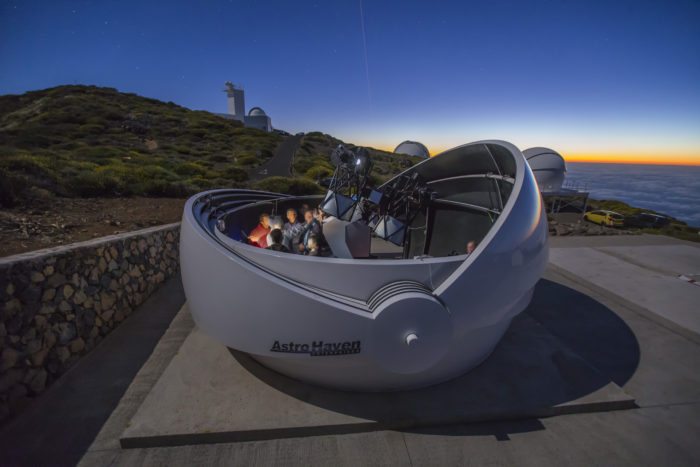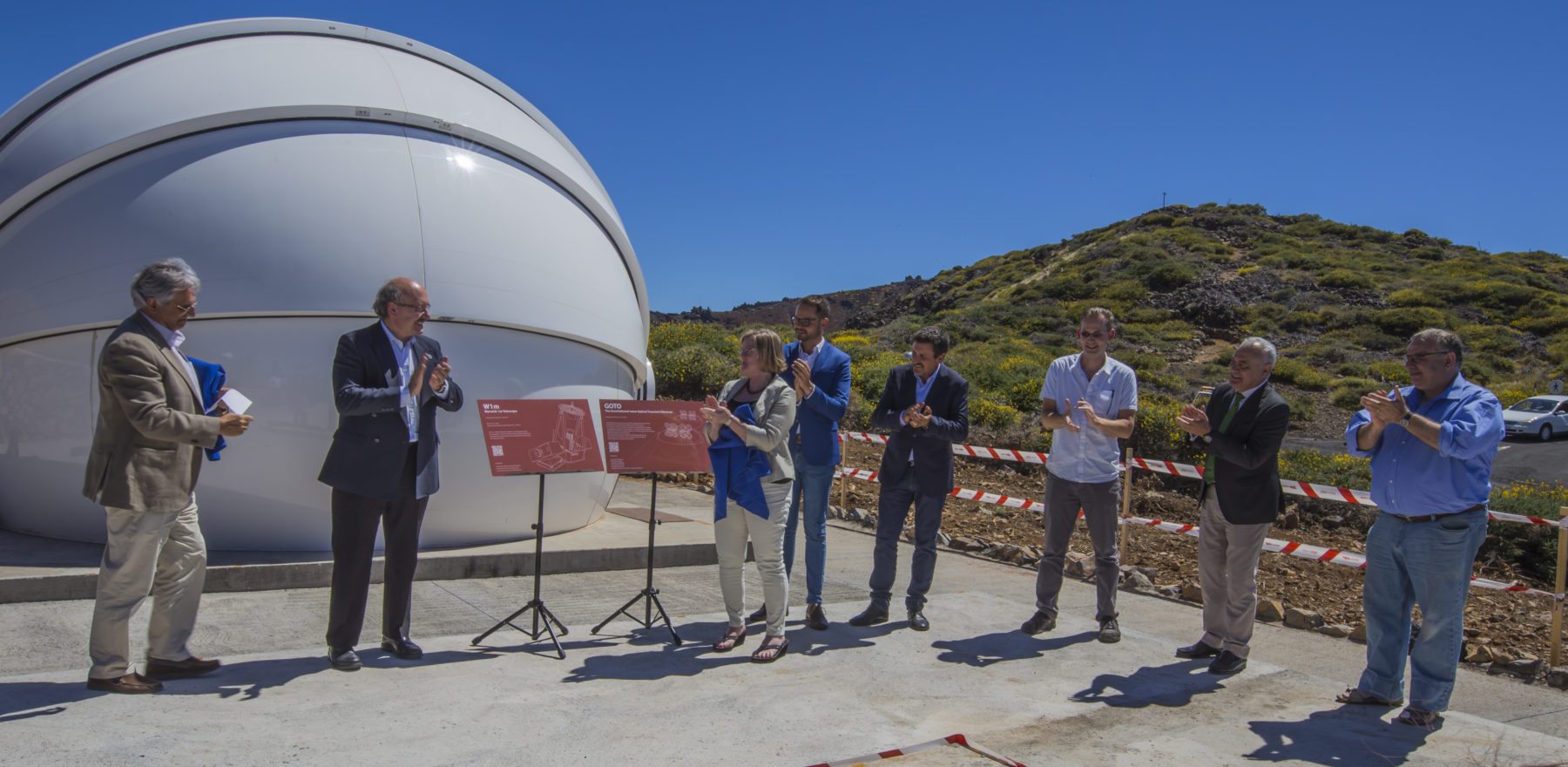Warwick unveil new telescope to probe gravitational waves
A new telescope designed to detect light signals associated with gravitational waves has been unveiled by a collaborative research group led by the University of Warwick’s Astronomy group.
The Gravitational-wave Optical Transient Observer (GOTO), based at Warwick’s astronomical observing facility on La Palma, will be used to search the skies for electromagnetic radiation that is thought to be produced during certain gravitational-wave events, such as when neutron stars merge. When a gravitational wave event is detected by another experiment, such as LIGO, GOTO will be notified and automatically scan in the area the wave is thought to have originated from.
Gravitational waves are ripples in the fabric of the universe that were originally predicted by Albert Einstein’s general theory of relativity…
Gravitational waves are ripples in the fabric of the universe that were originally predicted by Albert Einstein’s general theory of relativity back in 1915, caused by incredibly massive objects – such as black holes – colliding. They are currently only detectable by measuring incredibly small changes in the lengths of very long beams of light, using a technique called interferometry. If the predicted electromagnetic radiation is found by GOTO, the data gathered could provide us with crucial information about the extreme events that cause gravitational waves, as well as giving us a better understanding of gravity itself. The first detection of gravitational waves was reported just last year.

Image: Antonio Gonzalez / IAC
The telescope has been built with adaptability in mind, initially housing four wide-field telescopes on a mount which will be increased to eight in the second phase of the project. Further developments will hopefully include additional domes of telescopes and a potential second observation site in Australia. The first set of telescopes are designed to give a depth of 20-21 magnitude in 5 minutes, dependent on the sky brightness at the time of observation.
The data gathered could provide us with crucial information about the extreme events that cause gravitational waves…
The collaboration is spearheaded by both Warwick and Monash universities, although it also has members from the Universities of Sheffield and Leicester, Amargh Observatory and the National Astronomical Research Institute of Thailand.
Speaking about the project, Warwick’s Dr Danny Steeghs – one of the project’s two principal investigators – remarked: “After all the hard work put in by everyone, I am delighted to see the GOTO telescopes in operational mode at the Roque de los Muchachos observatory. We are all excited about the scientific opportunities it will provide.”
GOTO isn’t the only telescope operated by Warwick at the observatory on La Palma – it joins SuperWASP, the world’s most successful ground-based exoplanet discovery camera, which is a joint venture alongside Keele University. The island is ideal for astronomical observations, due to its high altitude and low levels of air and light pollution, and houses the world’s largest optical telescope, the Gran Telescopio Canarias.

Comments